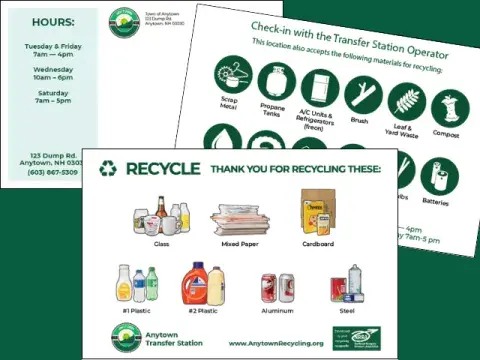Recycling with Results

Ongoing resident education is an important part of any municipal recycling program.
Recycling pamphlets that can be either handed out to patrons at your transfer station or recycling center or mailed to community residents are an effective tool for resident education. They can help educate new or short-term residents on the community's recycling program and act as a good reminder for long-term residents on what can be recycled.
Recycling postcards and handouts are 8.5" by 5.5" so they can be printed two-per-sheet, double-sided to save paper.
Best part of all - these customized recycling handouts and postcards are free of charge for NRRA Members (yes, another NRRA membership benefit!)
Request a customized Recycling Handout & Postcard Packet for your community by completing the request form below (or open the form in a new page).
**This material is based upon work supported under a grant by the Rural Utilities Service, United States Department of Agriculture. Any opinions, findings, and conclusions or recommendations expressed in this material are solely the responsibility of the authors and do not necessarily represent the official views of the Rural Utilities Service. Rural Community Assistance Partnership, Inc., is an equal opportunity provider and employer.
